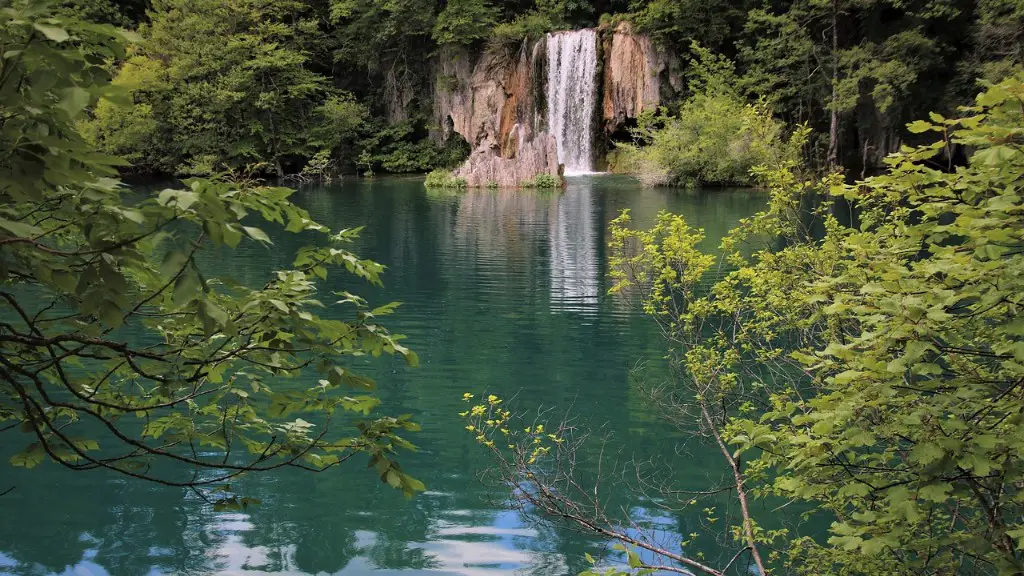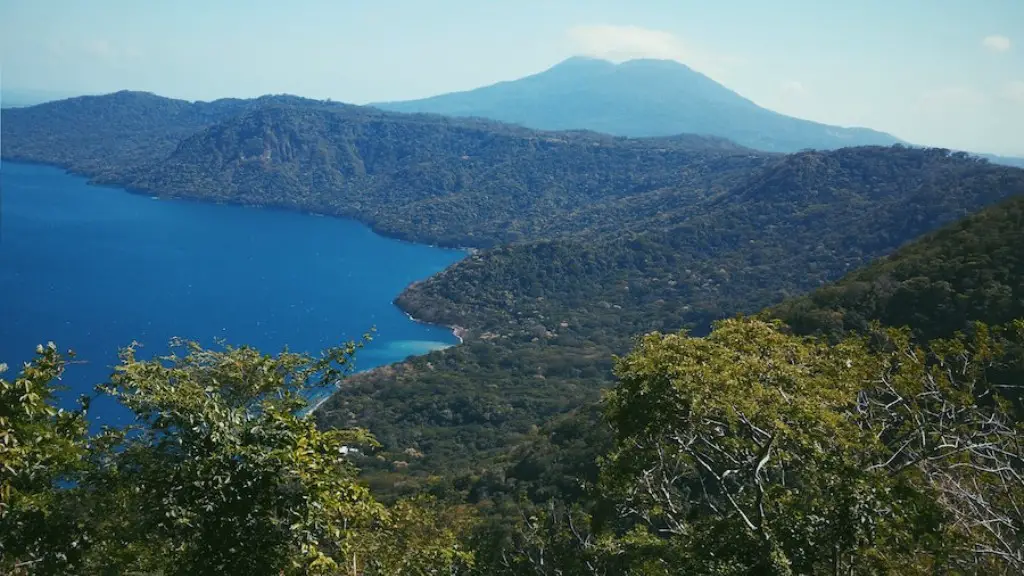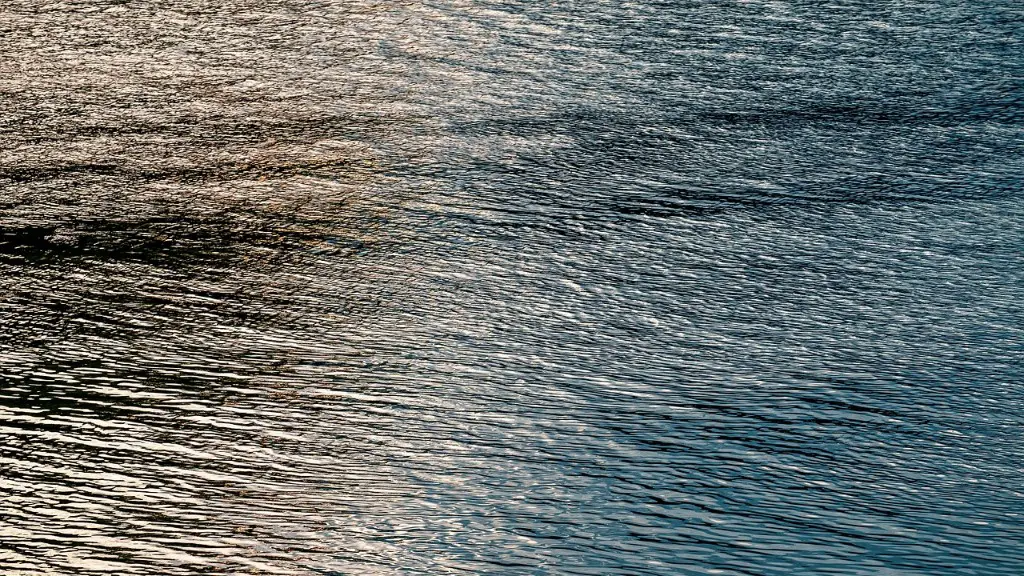Introduction to Lake Huron
Lake Huron is one of the five Great Lakes in North America. It is a large, shallow and relatively alkaline lake located in the Canadian province of Ontario, and the U.S. states of Michigan and Ohio. With a surface area of around 23,000 square miles and depths up to 750 feet, Lake Huron is the second-largest of the Great Lakes and fifth-largest in the world. More than 1.5 million people rely on the lake for their drinking water, and its waters support numerous fish species. Lake Huron’s fish population is diverse, including cold-water and warm-water species.
Cool Water Fish Species
Cold-water or cool-water fish species found in Lake Huron include lake whitefish, lake trout, chinook salmon and Atlantic salmon. Lake whitefish is the most common species; it is native to the lake, and its populations have been stable for many years. The lake whitefish is an important food fish found in many of the lake’s deeper waters. The lake whitefish is a major target species for sport and commercial fishing. Lake trout are also native to Lake Huron; their populations have declined in recent years, likely due to overfishing. Chinook salmon are not native to the lake, but were stocked in the 1960s; their population has grown since then, although Atlantic salmon have been unsuccessful in establishing themselves in Lake Huron.
Warm Water Fish Species
Warm-water fish species in Lake Huron include smallmouth bass, largemouth bass, lake sturgeon, yellow perch and walleye. Smallmouth and largemouth bass are found throughout the lake, but prefer clear, shallow waters with rocky outcroppings. Smallmouth bass can reach up to three pounds, while largemouth bass can reach up to ten pounds. Lake sturgeon were once a popular food fish, but their population has declined due to overfishing. They can reach a length of up to seven feet and weigh up to 200 pounds. Yellow perch are a popular game fish, preferring shallow, weedy waters. They can reach a length of ten inches and weigh up to two pounds. Walleye are also found in shallow waters, and can grow up to thirty inches in length and weigh up to ten pounds.
Native Fish Species
Lake Huron is home to many species of native or indigenous fish. These include the sturgeon chub, lake chub, creek chub, emerald shiner, and bowfin. The sturgeon chub is a small, native fish that is found in deep, cold areas of Lake Huron. Lake chubs live in slow-moving streams and rivers, while creek chubs inhabit shallower rivers and streams. Emerald shiners are small, silvery-green fish that live in deeper waters. Bowfin are larger, predatory fish found in marshy areas.
Non-Native Fish Species
Lake Huron also has a number of non-native species of fish, including common carp, channel catfish, rainbow trout, bluegill, pike, and sunfish. Common carp were stocked in Lake Huron in the 1880s, and are now one of the most abundant species in the lake. Channel catfish are another popular sport species. Rainbow trout are not native to Lake Huron, but were stocked in the lake in the 1960s, and have since become very popular with anglers. Other non-native species include bluegill, pike, and sunfish. These species are less popular than other species, but are still found in Lake Huron.
Fishing Regulations
Fishing regulations in Lake Huron vary by the species of fish being caught, as well as by location. In general, fishing regulations are designed to protect fish populations and promote sustainable use of the lake’s resources. For example, the daily catch limit for lake trout is five fish per person in Michigan, while in Ontario the limit is two fish per person per day. Regulations also vary by size; for example, Lake Huron has a 15 inch size limit for walleye. It is important to familiarize yourself with the fishing regulations in Lake Huron before heading out on the lake.
Impact of Humans on the Ecosystem
Humans have had a significant impact on the Lake Huron ecosystem. Pollution, the introduction of exotic species, overfishing, water diversion, and sedimentation have all had an impact on the lake’s fish population. In recent years, environmentalists have been working to restore the lake’s water quality and to protect fish populations. For example, government agencies and non-profit organizations have been working to reduce pollution and to restore native fish populations. Regulations have also been put in place to protect spawning areas and to reduce the impact of commercial fishing on fish stocks.
Fish Habitat Management
Fish habitat management is an important part of ensuring the long-term health of Lake Huron’s fish population. For example, government agencies and non-profit organizations are working to preserve spawning grounds and to reduce the impact of invasive species on native species. In addition, organizations such as the Great Lakes Fishery Commission are working to develop strategies for engineering fish habitats. These strategies include the installation of artificial reefs, habitat restoration projects, and the construction of fish passage structures. Such strategies are designed to encourage fish populations to thrive and reproduce in their native habitats.
Conclusion
Lake Huron is a large, diverse lake that supports a number of fish species. Its fish population includes both cool-water and warm-water species, native and non-native species. The health of the lake’s fish population is of great importance to the region, and is subject to a number of regulations. In addition, fish habitat management is an important tool for ensuring the long-term health of the lake’s fish population. By understanding the fish species found in Lake Huron, and by taking measures to ensure their health and sustainability, we can ensure that Lake Huron remains a healthy and vibrant source of recreational and commercial fishing for many years to come.


